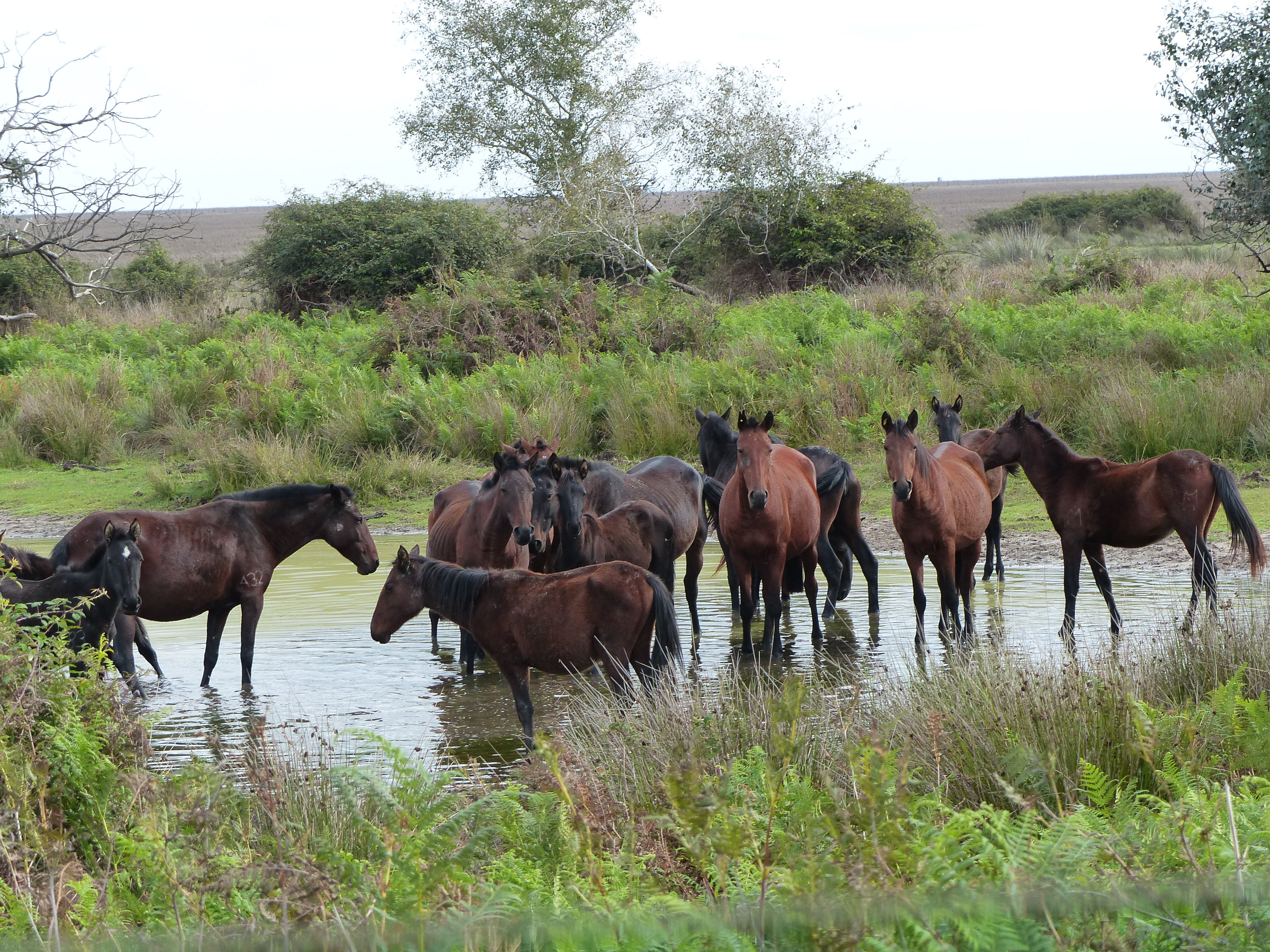Gen-E
Horses habitat. - Research View
 Search
Search

Horses have been living in the marshy habitat in and around Doñana park for at least several hundred years, and it is thought that these horses were the ones the conquistadors originally took to the Americas. The hardy, smallish horses were traditionally used to pull flat-bottomed boats through the marshes for the collection of eggs, etc. In the 1960’s a former director of EBD, Javier Castroviejo, recognized that the local people had taken an interest in “improving” these animals through the crossbreeding with other breeds. For this reason he searched out and bought the most “typical” morph animals he could find, which turned out to be two stallions and three mares. He isolated these animals in the Park, and they formed a feral population there. These animals were officially declared a local breed in 2013.
There are about 250 adults alive divided into three populations. Two are in Doñana Park, and are managed with large influence from EBD. Each of these two groups has about 100 adults. One is “pure” and the other had a Spanish Pure Bred animal involved in breeding several generations ago, so the current animals are 31/32 Retuertas breed, which is officially pure. The third group is about 50 adults and is in Salamanca as part of a “rewilding” project there.
Links to:
Pedigree
Genome
Behavior
Ongoing projects
Network
Publications
Brandariz-Fontes, C, JA Leonard, JL Vega-Pla, N Backström, G Lindgren, S Lippold and C Rico. 2013. Y-chromosome analysis in Retuertas horses. PLoS ONE 8(5): e64985.
Vega-Pla, JL, J Calderon, PP Rodriguez-Gallardon, AM Martinez and C. Rico. 2006. Saving feral horse populations: does it really matter? A case study of wild horses from Doñana National Park in southern Spain. Animal Genetics 37: 571-5678.
